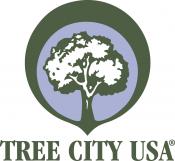Urban Forestry Program

Silverton’s urban forest improves quality of life by providing clean air and water for residents, visitors, and future generations. Urban forestry is the care and management of trees in an urban environment. The trees that line Silverton streets, shade parks and trails, and beautify neighborhoods help make Silverton the Garden City of Oregon. The City's urban forestry program strives to maintain and protect trees on public and some private property.
Tree permits are required to remove a tree. Removal of any street tree or any Oregon Oak 30" or larger in diameter, or five (5) or more trees on private property require a permit. With the exception of some trees on private property, if you cut down a tree in Silverton, you must replace it with another approved tree. (See 'recommended Street Tree List').
The City temporarily authorized tree removal without a permit, but the process has been updated in order to protect urban trees and better track the impacts of the storm, on street trees in particular. Please view the Tree Permit Application for a list of criteria for requesting approval to remove a tree. Use the contact information on this page for help determining if you will need to submit an permit application.
Oregon Department of Forestry Information for Saving Storm Damaged Trees

Tree City USA & Arbor Day
Silverton has been named a Tree City USA in 2019 by the Arbor Day Foundation in honor of its commitment to improving urban forest management.
The Tree City USA program is sponsored by the Arbor Day Foundation in partnership with the U.S. Forest Service and the National Association of State Foresters. Silverton achieved Tree City USA recognition by meeting the program’s four requirements: a tree board or department, a tree-care ordinance, an annual community forestry budget of at least $2 per capita and an Arbor Day observance and proclamation.
The City encourages all community members to participate in the Arbor Day festivities by planting or pruning trees on your property (see planting information below), taking a walk to see an Oregon Heritage Tree or learning more about the importance of trees from the Arbor Day Foundation.
Street Trees, Planting and Maintenance
Though the City does not encourage removal of trees, sometimes it is necessary. This is especially true when trees are considered hazardous or in poor condition. The City requires approval for planting, removal or trimming of trees (see trimming trees section below for trimming permitted without additional City review) on public property, including street trees in front of homes and businesses. If you are unsure of the condition of your tree, it is recommend to have a certified arborist take a look at it.
Street Tree Permit Application
Trimming Trees
Regular maintenance and trimming of street trees is the responsibility of the property owner. The City notifies properties out of compliance on an annual basis. If you have received a notification, you do not need further approval for trimming per the specifications below.
Trees, shrubs or plants standing in or upon any public street or alley, or on private grounds, and having branches projecting into the public street or sidewalk, shall be kept trimmed by the owner or owners of the property adjacent to or in front of such trees, shrubs or plants, growing so that:
- The lowest branches shall not be less than a minimum of 12 feet above any surface of the street pavement, and shall not be less than 14 feet above the surface of streets designated as state highways;
- The lowest branches shall not be less than a minimum of eight feet above any surface of a sidewalk;
- The highest branches of any bush or shrub on private property shall comply with the clear vision area requirements.
Newly planted trees may remain untrimmed; provided, that they do not interfere with street traffic or persons using the sidewalk, or obstruct the light of any street electric lamp (SMC Chapter 3.2).
Planting Trees
Trees in Silverton shade homes and beautify yards. They also function to reduce soil erosion and flooding, as well as improve local air and water quality. A healthy urban forest begins with careful planning. A few factors to consider before planting a tree are:
- Is the tree going to be planted on public property? You will need to submit a Street Tree Permit application.
- The function of the tree. Do you want the tree to provide shade, fruit, or seasonal color? Or do you want it to act as a windbreak or screen?
- Choose the right tree for the right space. It is important to pick your site first, then your tree second. Does the space lend itself to a small, medium, or large tree? Try and imagine the size of the tree at maturity, not at the time of planting.
- The soil conditions. Do you have fertile, well-drained soil or shallow, compacted soil?
- How much time you will have to properly care for your tree? The first 3-5 years are the most important years for the survival of a new tree. Do you have time to water, fertilize, and prune the tree until it is established? Or will you rely on your garden or tree care service for assistance?
The ideal time to plant a tree in the Willamette Valley is late fall through early winter, after leaf drop and well before bud break. Always select healthy trees from a nursery. Choose a tree with a straight, strong single stem, and good form. Make sure the tree does not have signs of insect damage, dead bark, or cankers.
The City of Silverton has compiled a list of recommended street trees for planting within the street right-of-way planting strips.
